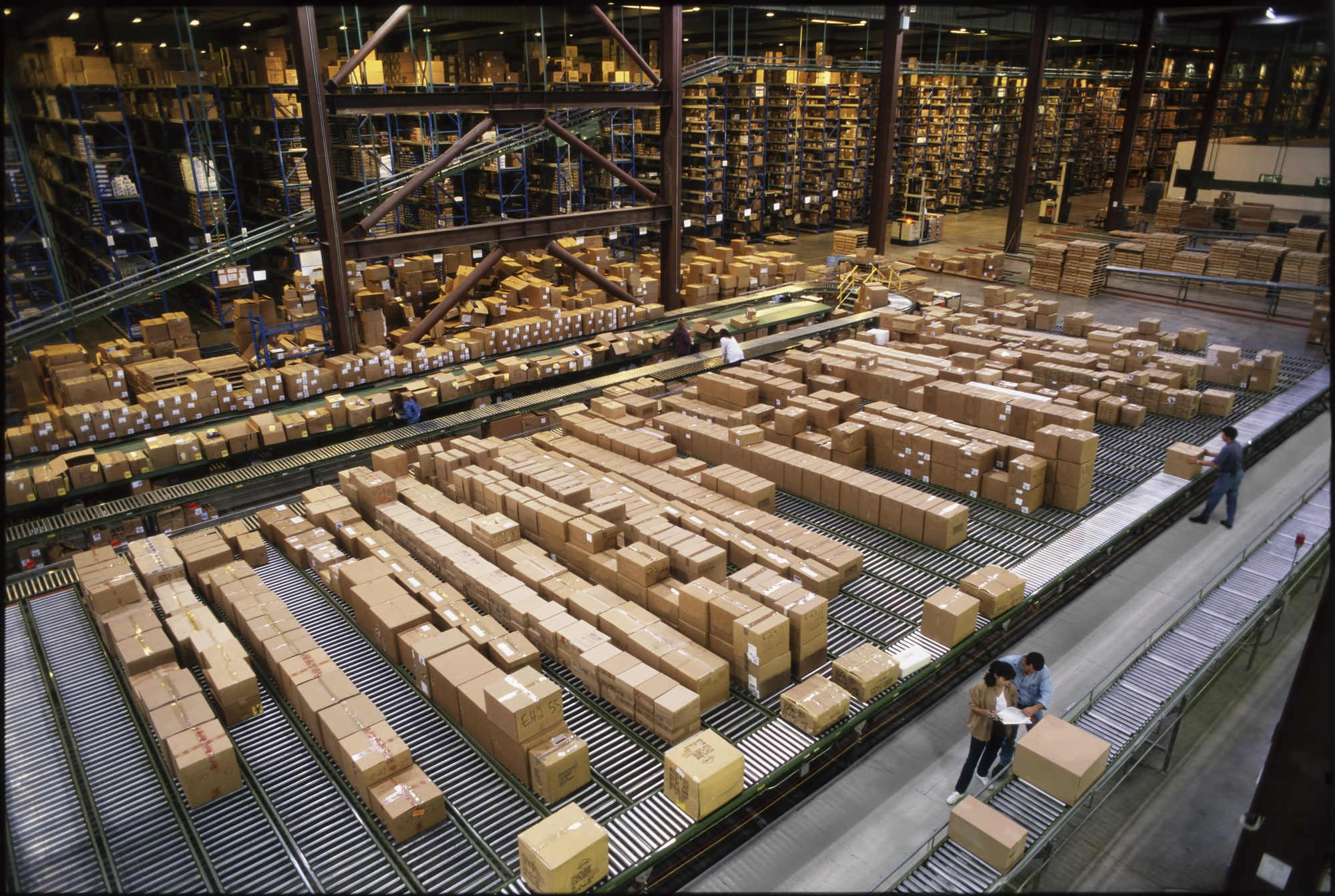U.S. manufacturing is making a comeback, but a growing labor shortage threatens its momentum. As retirements rise and younger workers opt out, nearly 2 million jobs could go unfilled by 2033. We spoke with Dave Evans, CEO of Fictiv, to find out what’s driving the gap and what the industry needs to do to close it.
Supply Chain 24/7: We keep hearing about a manufacturing comeback in the U.S., but the talent gap seems to be growing. What’s really driving this labor shortage?
Dave Evans: There’s a lot of talk about a U.S. manufacturing comeback—and it’s true. More companies are bringing production back home (68% of manufacturing and supply chain leaders say they’re working on reshoring back to the U.S.), and there’s a surge in demand for everything from semiconductors to electric vehicles. At the same time, the talent gap is getting wider, and that’s a real problem. One of the biggest reasons is that manufacturing jobs themselves have changed. Today’s manufacturing roles aren’t just about assembly lines—they require skills in areas like CNC machining, robotics, and automation. The problem is, a lot of people either don’t have that training or don’t realize those kinds of jobs even exist.
As the current workforce retires, they’re taking decades of experience with them. At the same time, younger people aren’t filling those gaps fast enough. Many were pushed toward four-year degrees and never really considered trade or technical careers. Plus, most schools don’t do a great job of showing students what modern manufacturing looks like. So even though the industry is growing, it’s struggling to find the people it needs to keep up.
SC247: You’ve said the gap could hit nearly 2 million open jobs by 2033. Is this just about retirements, or is something bigger going on?
DE: According to Deloitte, there will be 1.9 million unfilled manufacturing roles by 2033. A large wave of retirements is making the problem worse. While retirements are a major factor, they’re only part of the picture—the real challenge lies in building a new generation of skilled talent ready to take their place.
There’s a broader disconnect between the modern reality of manufacturing and how people still perceive it. Many young people see it as low-tech or low-paying, when in fact today’s manufacturing is driven by automation, robotics, and digital tools—and many of those roles pay well and don’t require a four-year degree. Add in the lack of exposure to hands-on careers in schools, limited access to vocational training, and a cultural push toward college as the only path, and the result is a growing gap between the jobs that exist and the people who are ready to fill them. So yes, retirements matter—but it’s the system around talent development and awareness that needs a major update.

Dave Evans, CEO of Fictiv
SC247: What kind of roles are going unfilled right now, and how does that impact a company like Fictiv?
DE: A wide range of manufacturing roles are going unfilled, and it’s not just entry-level positions. Many of the most in-demand jobs are highly skilled and tech-driven, reflecting how much the industry has evolved.
For example, manufacturers are struggling to hire CNC machinists and programmers, who operate and program precision machinery to create complex parts. There’s also high demand for industrial maintenance technicians, welders, and tool and die makers—all roles that require hands-on expertise and technical training. On the more advanced end, companies are looking for robotics technicians, automation engineers, and quality control specialists who can manage sophisticated systems and ensure production meets tight specifications.
As manufacturing continues to modernize, the demand for workers who can combine technical know-how with digital skills, like working with CAD software, interpreting data, or maintaining smart factory systems, is only growing.
At Fictiv, we’re fortunate to have a highly skilled workforce across four manufacturing regions (China, India, Mexico, and the U.S.). In the U.S., we work with manufacturing partners that leverage advanced technology to promote efficiency, automation, and production at scale. They’re able to meet demand, but face the same labor challenges other manufacturers do.
SC247: Why do you think younger generations are turning away from manufacturing careers?
“There’s a broader disconnect between the modern reality of manufacturing and how people still perceive it. Many young people see it as low-tech or low-paying, when in fact today’s manufacturing is driven by automation, robotics, and digital tools—and many of those roles pay well and don’t require a four-year degree.”
DE: I’d argue that one of the biggest labor challenges facing manufacturing is getting more young people to pursue careers in the industry. Many young people have grown up hearing stories about manufacturing plants shutting down—stories of lost jobs, struggling local economies, and how their parents or grandparents were left without a livelihood. Negative perceptions about manufacturing work (repetitive, low-skill, unsafe) don’t help.
SC247: What are the biggest misconceptions younger workers have about today’s manufacturing jobs?
DE: One of the biggest misconceptions younger workers have about manufacturing is that it’s outdated and physically demanding. Many still associate factory jobs with the industrial era—dark, noisy environments with little room for creativity or advancement. This perception doesn’t reflect today’s reality. Modern manufacturing is often clean, automated, and high-tech, with advanced machinery, robotics, and digital tools playing a central role. Unfortunately, because these advancements aren’t widely showcased in schools or media, many young people don’t realize how much the industry has evolved.
Another common misconception is that manufacturing lacks long-term career growth or financial stability. There’s a widespread belief that a four-year college degree is the only path to success, while trade and technical careers are seen as “lesser” options. In reality, skilled manufacturing roles often pay well above average and offer clear opportunities for advancement, especially in areas like CNC machining, quality control, and automation. With growing demand for domestic production and increasing investment in U.S. manufacturing, these careers are not only viable—they’re essential to the future of the economy.
SC247: What needs to happen to change the narrative and make these careers more appealing?
DE: Misconceptions about manufacturing jobs persist, but we need to modernize the narrative. It’s not just about “making stuff.” It’s about leveraging automation, robotics, AI, sustainability, and cutting-edge design to build the future, to unlock creativity and innovation. To inspire the next generation to invent lifesaving medical devices, rockets, or surgical robots.
STEM education can help here.
Hands-on STEM education and real-world skills can help bridge the gap between perceptions of manufacturing jobs and today’s reality. Manufacturers should partner with high schools, trade schools, and community colleges to offer internships, co-ops, and tours. Corporate sponsorship of university engineering team projects can plant the seed for the challenging and rewarding world of mechanical and design engineering; Formula Electric Berkeley is one example.
SC247: Are there particular skills or career paths within manufacturing that you think should be more attractive to Gen Z?
DE: For starters, tech-focused roles like automation technician, robotics specialist, CNC programmer, and mechanical engineer are a natural fit for a generation that’s grown up with technology. These jobs involve working with advanced systems, problem-solving in real time, and using digital tools—all of which appeal to anyone comfortable with tech who desires dynamic, engaging work. Plus, many of these roles offer strong salaries, hands-on experience, and clear pathways for advancement, often without requiring a traditional four-year degree.
Roles focused on green engineering, materials science, and clean tech production allow them to work on projects that have a direct impact on the environment—something that aligns with their values around purpose and social responsibility. With the right exposure, messaging, and training opportunities, these kinds of careers could be incredibly attractive to a generation looking for work that’s both meaningful and future-proof.
Finally, the manufacturing workplace itself must evolve. Companies that offer meaningful work, inclusive environments, and climate-conscious practices are more likely to attract and retain the next generation.
“In my opinion, fears about automation replacing human workers are somewhat overblown. While it’s true that automation is changing the nature of work in manufacturing, it’s not eliminating the need for people—it’s redefining their role.”
SC247: What role does automation play in closing the labor gap? Is it helping or making it harder to find and keep talent?
DE: In my opinion, fears about automation replacing human workers are somewhat overblown. While it’s true that automation is changing the nature of work in manufacturing, it’s not eliminating the need for people—it’s redefining their role. Instead of displacing workers en masse, automation is actually opening the door to more dynamic, engaging, and high-value tasks. Rather than spending days doing repetitive or physically demanding labor, workers can now focus on areas where human skills really shine: creative problem-solving, quality control, critical thinking, and collaboration. Workers aren’t being phased out; they’re being given the opportunity to level up and engage with more meaningful, tech-enabled responsibilities.
No matter how advanced robotics and AI become, they rely on people to design, manage, and refine their systems. The more automated a facility becomes, the greater the need for skilled professionals who can interpret data, troubleshoot issues, and optimize performance. In that sense, automation doesn’t reduce the need for talent—it raises the bar for the type of talent manufacturers need to stay competitive.
Automation is creating a whole new category of jobs that didn’t exist a decade ago. From robotics technicians and automation engineers to systems analysts and machine learning specialists, the workforce is expanding in new directions. These roles combine traditional manufacturing knowledge with digital fluency, offering career paths that are both stable and future-forward. For tech-savvy workers, this presents an exciting opportunity to work with cutting-edge technology in a hands-on, impactful way.
SC247: You operate globally—are there any lessons from Mexico, India, or China that the U.S. could learn from when it comes to building a strong manufacturing workforce?
DE: Yes, absolutely. When it comes to building a strong manufacturing workforce, the U.S. can learn a few important lessons from countries like Mexico, India, and China.
One big takeaway is the way these countries integrate vocational training and education directly with industry needs. In places like Germany or China, it’s common for students to enter apprenticeship or technical programs that are tightly aligned with what manufacturers actually require on the ground. I think the U.S. could do a better job of building those kinds of structured pathways—programs where young people can learn real skills, earn while they train, and step right into meaningful jobs without taking on a ton of debt.
Another thing that stands out to me is how countries like India are investing heavily in upskilling at scale, especially with digital tools and automation. They’re embracing online learning platforms and public-private partnerships to train workers quickly and get them job-ready. In the U.S., we have the resources to do this, but we’re still a bit fragmented. If we took a more coordinated, national approach—connecting government, education, and industry—we could really strengthen our talent pipeline and make manufacturing careers more accessible and appealing.
Addressing the labor shortage in U.S. manufacturing isn’t something any single group can solve alone. It will take coordinated efforts across industries and sectors, including employers, educators, policymakers, and workforce development organizations.
SC247: What do you think the manufacturing workforce will look like in 2030?
DE: By 2030, I think the manufacturing workforce will look a lot different—more tech-driven, more diverse, and far more dynamic than it is today.
For one, the integration of advanced technologies like automation, AI, and smart systems will reshape many roles. We’ll see fewer people doing repetitive manual tasks and more workers managing complex machines, analyzing data, and overseeing automated processes. That means roles like robotics technician, CNC programmer, data analyst, and industrial systems integrator will become even more common—and necessary. Even with smarter tech, it’s human skills—critical thinking, adaptability, creativity—that will keep manufacturing moving forward.
Dave Evans is the CEO and Co-Founder of Fictiv, a global supply chain and manufacturing company for custom mechanical products. Dave is a regular contributor for Fast Company and Forbes, has been featured on NBC News, Nasdaq, TechCrunch, and Discovery, and was named to the Forbes 30 Under 30 list. Dave was the first hire at Ford’s Silicon Valley Innovation Lab and graduated from Stanford University with a B.S. in Mechanical Engineering. Dave is a hands-on dad of two, husband, builder, and creator.




